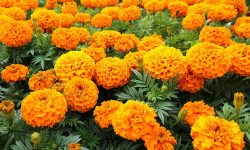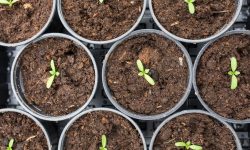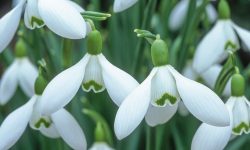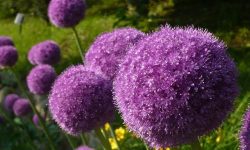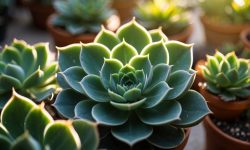Sunflower seeds are more than just a tasty snack. They are a source of nutritious oil, a valuable food for wildlife, and an essential crop for home gardeners. Knowing when to harvest sunflower seeds is key to getting the best flavor, texture, and germination potential. Harvesting too early can result in seeds that are underdeveloped and lack their signature crunch. Harvesting too late risks damage from mold, birds, or seed loss.
A precise harvest time depends on both plant maturity and environmental conditions. By observing the plant’s natural signals and applying the right techniques, you can ensure a successful yield. This guide will walk you through every detail, from understanding sunflower growth stages to post-harvest storage. Whether you are a home gardener or managing a large field, you will gain expert tips to perfect your harvest timing.
Understanding Sunflower Growth Stages
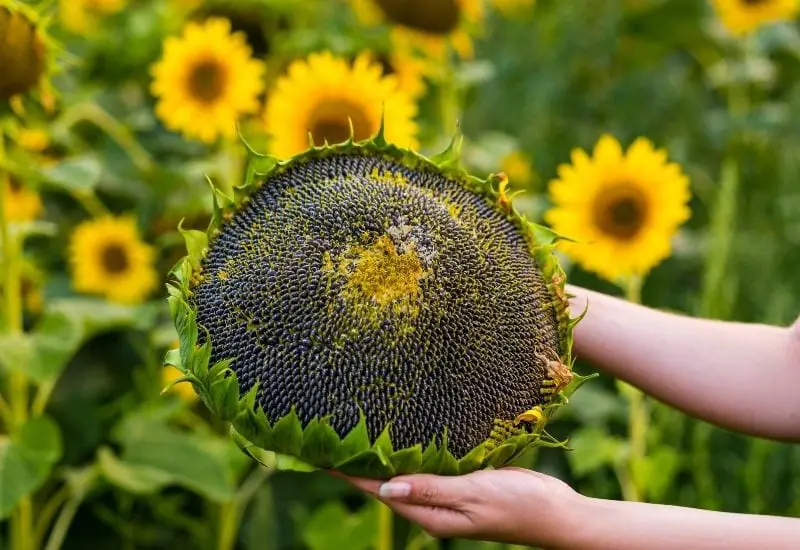
Early Growth and Flowering Phase
The early growth stage begins when sunflower seeds germinate and produce their first true leaves. Sunflowers thrive in full sun and grow quickly during warm weather. Their strong stems and broad leaves develop rapidly, setting the stage for a large, healthy flower head. By mid-growth, the plant directs most of its energy toward producing buds that eventually open into vibrant yellow blooms.
During flowering, pollinators such as bees visit the flower heads, transferring pollen and helping fertilize the seeds. This stage is essential because the quality of pollination directly influences seed size and development. While the blooms are at their peak, the seeds inside are still immature and too soft for harvesting. At this time, it is important to maintain steady watering and protect the plant from pests so it can continue building energy for seed production.
Seed Development and Maturation
After pollination, the petals gradually wilt and fall away, revealing the developing seeds. Over the next several weeks, the seeds fill out, harden, and change color. This maturation process varies by sunflower variety, but most take about 30 to 45 days after flowering to reach harvest readiness.
During this time, the back of the sunflower head will shift from green to yellow, and eventually to brown. This change is a reliable indicator that moisture levels in the seeds are decreasing, and the plant is nearing the end of its life cycle. Monitoring the seed’s firmness and color during this stage ensures that you can pinpoint the perfect harvest moment. Avoid rushing the process, as seeds left to mature fully on the plant will have the best flavor and storage potential.
Signs That Sunflower Seeds Are Ready to Harvest
Physical Changes in the Flower Head
One of the most reliable ways to know when sunflower seeds are ready for harvest is by observing the flower head. As the seeds mature, the bright yellow petals will begin to dry and fall away, leaving a rough, bristly disk. The back of the flower head changes color from vibrant green to a dull yellow, and eventually turns a deep brown. This shift signals that the plant has stopped supplying nutrients to the seeds, allowing them to harden naturally.
In addition, the flower head may begin to droop or face downward as it becomes heavier with fully developed seeds. This natural tilt helps protect the seeds from excess rain and reduces the risk of mold. At this stage, the seeds are close to their peak maturity, and close inspection will reveal a firm texture and well-defined patterns on their shells.
Seed Color, Size, and Firmness
When the seeds are nearly ready, they reach their full size and distinct coloration. Depending on the variety, mature sunflower seeds can be striped black and white or solid black. The seeds should feel firm to the touch, with no softness or indentation when pressed gently between your fingers. A mature seed will also detach more easily from the head, indicating it has naturally loosened and is ready to be collected.
Another sign is the seed’s moisture content. If the seeds feel damp or soft, they need more time on the plant to dry. Harvesting too early can result in shriveled seeds that lack both flavor and storage life. Patience during this stage ensures seeds that are plump, crunchy, and full of nutritional value.
Factors That Affect Harvest Timing
Variety Differences in Maturity
Different sunflower varieties have unique growth timelines, which directly influence when the seeds are ready for harvest. Some ornamental sunflowers mature in as little as 80 days, while larger seed-producing varieties can take up to 120 days. Knowing the specific maturity period of your chosen variety allows you to plan your planting schedule so that harvesting aligns with optimal weather conditions.
Varieties bred for oil production often have smaller seeds and mature faster, while those grown for snacking tend to have larger seeds that require more time to fill and harden. Reading seed packet instructions or grower’s guides is essential for understanding these differences. By matching your variety to your region’s climate and growing season length, you can avoid harvesting during periods of high humidity or early frost, both of which can affect seed quality.
Climate and Weather Conditions
Climate plays a major role in determining the right harvest window for sunflower seeds. Warm, dry weather encourages faster maturation, while cooler temperatures or prolonged rain can delay the process. Consistent moisture late in the season can cause the seeds to retain higher water content, increasing the risk of mold during storage.
In regions with short growing seasons, it is crucial to plant early enough to ensure the seeds mature before the first frost. In contrast, in warmer climates with extended summers, growers may have more flexibility, allowing seeds to dry longer on the stalk for maximum flavor and texture. Monitoring both daily temperatures and long-term forecasts helps you make timely harvesting decisions that preserve seed quality.
How to Check Seed Readiness Accurately
Inspecting the Back of the Flower Head
The back of the sunflower head is one of the clearest indicators of seed maturity. As seeds ripen, the green surface gradually fades to yellow and eventually turns a rich brown. This shift in color means the plant is no longer supplying moisture to the seeds, allowing them to dry naturally. At this stage, the petals will have fallen away, and the head may tilt downward due to its weight. A gentle rub on the seed face will loosen some seeds, signaling that harvest time is close.
It is important to check multiple heads if you have several plants, as not all will mature at the same pace. Environmental factors like sunlight exposure and soil nutrients can cause variations even within the same variety. Waiting until most heads show a consistent brown color will help ensure a uniform harvest with fewer immature seeds.
Testing Seed Firmness and Detachment
Seed firmness is another reliable sign of readiness. Mature sunflower seeds should feel solid under light pressure, without any sponginess or bending. When seeds are ready, they will detach easily from the head with minimal effort, often falling into your hand when brushed. This indicates that the natural drying process is complete, and the seeds are no longer tightly bound to the plant’s tissue.
If seeds still feel soft or are difficult to remove, give them a few more days to mature. Harvesting too early can lead to shriveled seeds that store poorly and lack flavor. Conducting firmness tests on a few seeds every couple of days ensures you catch the perfect harvest moment without risking loss to birds or weather damage.
Harvesting Techniques for Sunflower Seeds
Cutting the Flower Heads
The most common way to harvest sunflower seeds is by cutting the entire flower head from the stalk once it reaches maturity. Use clean, sharp garden shears or pruning scissors to make a smooth cut about 30 centimeters below the head. Leaving part of the stem attached makes handling easier and provides a natural grip for drying. Choose a dry, sunny day for cutting to reduce moisture in the seeds and lower the risk of mold.
After cutting, place the heads in a well-ventilated area protected from rain and strong wind. If you are harvesting multiple heads, keep them slightly apart to allow good air circulation. This stage is critical because excess moisture trapped between heads can lead to fungal growth, which will compromise both flavor and storage quality.
Manual and Mechanical Seed Removal
Once the flower heads have dried, seeds can be removed by hand or with the help of small tools. For manual removal, rub your palm or thumb firmly across the seed face to loosen and release the seeds. This method works well for home gardeners with a small number of plants. A large bowl or tarp underneath can help catch the falling seeds and keep the area tidy.
For bigger harvests, mechanical tools or seed threshers can speed up the process. These devices gently separate the seeds from the flower head without causing damage. Regardless of the method, ensure all seeds are free from debris and plant material before moving to the next stage of cleaning and storage.
Post-Harvest Drying and Cleaning
Proper Drying Methods
After seeds are removed from the sunflower heads, proper drying is essential to preserve their flavor and prevent spoilage. Spread the seeds in a thin, even layer on a clean tray, screen, or cloth in a well-ventilated, dry space. Avoid direct sunlight at this stage, as excessive heat can cause the seeds to lose natural oils and become less flavorful. Stir or turn the seeds daily to ensure they dry evenly on all sides. Depending on humidity levels, this process can take between one and two weeks.
For those in humid climates, using a food dehydrator on the lowest setting can speed up the process while maintaining seed quality. The goal is to achieve a moisture content low enough to prevent mold during storage. Well-dried seeds will feel hard to the touch and produce a crisp snapping sound when cracked open.
Cleaning for Storage or Consumption
Cleaning seeds after drying is important for both storage and eating. Begin by sifting through the batch to remove any broken seeds, petals, or small bits of debris. For larger harvests, a mesh sieve can help separate dust and fine plant material from the seeds. If the seeds are intended for immediate consumption, a quick rinse in clean water followed by thorough drying can enhance their appearance and freshness.
For storage, ensure the seeds are completely dry before sealing them in containers. Any remaining moisture can lead to mold growth, especially in airtight environments. Taking time to clean seeds properly ensures they remain fresh, nutritious, and safe to eat for many months.
Storing Sunflower Seeds for Long-Term Use
Choosing the Right Containers
Selecting the right container is key to preserving sunflower seeds for months or even years. Airtight glass jars, food-grade plastic containers, or vacuum-sealed bags are all excellent choices. Glass jars are often preferred because they do not retain odors and provide a clear view of the contents. Before storing, make sure both the container and the seeds are completely dry to avoid moisture buildup. Even small amounts of dampness can trigger mold growth or cause seeds to lose their crisp texture.
When storing for more than a few months, consider dividing the seeds into smaller portions. This way, you only open what you need, minimizing exposure to air each time. Properly sealed containers will also protect the seeds from pests such as pantry moths or beetles, which can easily invade if storage is not secure.
Ideal Storage Conditions
Temperature and light control play a big role in long-term seed preservation. Keep containers in a cool, dark, and dry location, such as a pantry, cupboard, or basement with low humidity. Direct sunlight can cause oils in the seeds to break down faster, leading to rancidity. For very long storage, refrigeration or freezing is an effective option, especially in warm climates.
If freezing, use moisture-proof packaging and allow the seeds to come to room temperature before opening the container to prevent condensation. Well-stored sunflower seeds can last up to a year at room temperature and even longer when kept cold. Monitoring storage conditions regularly ensures seeds remain fresh, flavorful, and ready for planting or eating.
Common Mistakes to Avoid When Harvesting Sunflower Seeds
Harvesting Too Early
One of the most frequent mistakes is cutting sunflower heads before the seeds have fully matured. Harvesting early results in seeds that are soft, underdeveloped, and lacking in flavor. Immature seeds also have higher moisture content, which makes them prone to mold and poor storage performance. A good rule is to wait until the back of the sunflower head has turned completely brown and the petals have fallen away. This ensures the plant has finished transferring nutrients to the seeds.
Checking for seed firmness before harvesting is essential. Gently press a few seeds between your fingers; if they feel hard and come away easily, they are ready. Patience during this stage will reward you with fuller, tastier seeds that store well.
Ignoring Weather and Moisture Levels
Another common error is harvesting during wet or humid weather. Moisture trapped in the seeds at harvest time can lead to fungal growth and spoilage during storage. It is best to harvest on a dry day, preferably after several days of warm, sunny weather. This allows the seeds to naturally dry while still on the stalk, reducing post-harvest drying time.
In areas with unpredictable weather, you may need to cut the heads slightly early and finish drying them indoors to avoid losses from rain or frost. Monitoring local forecasts and adjusting your harvest schedule accordingly can prevent quality loss and extend the storage life of your seeds.
Benefits of Harvesting Your Own Sunflower Seeds
Freshness and Superior Flavor
When you harvest sunflower seeds directly from your garden, you have complete control over the timing, handling, and storage process. This means the seeds reach your table at their peak freshness, full of natural oils that give them a rich, nutty flavor. Commercially packaged seeds often go through extended processing and long transport times, which can reduce both taste and texture. By contrast, freshly harvested seeds retain a vibrant crunch and aroma that makes them ideal for snacking, baking, or adding to salads.
Freshly harvested seeds also preserve more of their original nutritional profile. They are an excellent source of vitamin E, magnesium, protein, and healthy fats, all of which can degrade over time in stored commercial products. With home-harvested seeds, you know exactly how they were dried, whether they were roasted, and if any seasoning was added. This transparency and quality control are key reasons many gardeners choose to grow and harvest their own.
Cost Savings and Self-Sufficiency
One of the most practical benefits of harvesting your own sunflower seeds is the cost savings. A single sunflower head can yield hundreds of seeds, providing enough for snacks, cooking, and even planting in the following season. Over time, this can save you significant money compared to purchasing pre-packaged seeds from stores. By collecting seeds each year, you create a self-sustaining cycle, reducing your reliance on commercial seed suppliers.
Self-sufficiency also extends to quality assurance. When you save seeds from your healthiest plants, you’re naturally selecting traits like strong growth, large seed size, and resistance to pests or diseases. This method, often called “seed saving,” ensures that each generation of plants adapts better to your local climate and soil. It’s an environmentally friendly approach that supports biodiversity while providing you with a reliable food and seed source for years to come.
FAQ About When to Harvest Sunflower Seeds
How do I know when sunflower seeds are ready to harvest?
Sunflower seeds are ready when the back of the flower head changes from green to yellow and then to a deep brown. By this stage, petals will have dried and fallen away, and the seeds will feel hard to the touch. You can test by gently rubbing a few seeds—if they come out easily and have their full color and pattern, they’re ready for picking.
Can I eat sunflower seeds straight from the plant?
Yes, you can eat them raw, but they will taste milder and less crunchy than roasted seeds. Fresh seeds have a light, earthy flavor and higher moisture content. For richer taste and longer storage life, rinse them, soak in salted water, and roast until lightly golden.
What is the best way to dry sunflower seeds after harvesting?
Cut the flower heads with about 30 cm of stalk and hang them upside down in a dry, ventilated place, away from direct sunlight. Cover with a paper bag to catch falling seeds and keep birds away. Depending on humidity, drying takes one to two weeks.
How long can harvested sunflower seeds be stored?
Properly dried seeds can last up to a year in an airtight container kept in a cool, dark spot. For extended storage, refrigerate or freeze them in moisture-proof packaging. Always check for signs of mold or off odors before use.
Can I use harvested sunflower seeds for planting next year?
Yes, choose the largest, healthiest seeds from strong plants. Make sure they’re fully dry, then store them in paper envelopes or cloth bags in a cool, dry place. Label them with the variety and harvest date for easy reference next season.
Conclusion
Knowing exactly when to harvest sunflower seeds is key to preserving their full flavor, texture, and nutritional value. By waiting for clear maturity signs, drying them properly, and storing them in ideal conditions, you can enjoy fresh seeds for months or even years. Whether you use them for healthy snacks, cooking, or saving for next season’s planting, home-harvested seeds bring unmatched freshness and satisfaction. Growing and harvesting your own sunflowers turns a simple garden into a source of beauty, flavor, and self-reliance.

